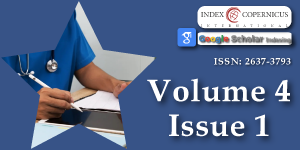Giant prolactinoma case with side effects due to cabergoline
Main Article Content
Abstract
Dopamine agonists should usually be the first treatment for patients with prolactinomas of all sizes, because these drugs decrease serum prolactin concentrations and decrease the size of most lactotroph adenomas. Cabergoline is preferred first. When cabergoline develops side effects bromokriptin is switched. Cabergoline is more efficient than bromocriptine. Its side effect profile more favorable than bromocriptine. Cabergoline is an ergot dopamine agonist that is administered once or twice a week. Cabergoline can have rarely serious psychiatric adverse effects, including psychosis, impulse control disorders, dyskinesia, pulmonery fibrosis and valvular heart disease.
Prolactinomas are the most common pituitary tumors, 93%-95% of the cases are microadenomas. Macroprolactinomas larger than 40 mm, known as giant prolactinomas, are exceptionally rare, accounting for 0.5% - 4% of all prolactin-hypersecreting adenomas.
In our case, after the 7 x 6 cm giant macroprolactinoma operated we report the manic episode occuring during the second week of cabergoline treatment. In the treatment of patients with prolactinoma, cabergoline is a first choice drug because it has a better tolerance profile and is more effective, however, bromocriptine can be switched to when drug resistance or side effects develop to cabergoline.
Article Details
Copyright (c) 2020 Çalkaya S, et al.

This work is licensed under a Creative Commons Attribution-NonCommercial 4.0 International License.
The Archives of Case Reports is committed in making it easier for people to share and build upon the work of others while maintaining consistency with the rules of copyright. In order to use the Open Access paradigm to the maximum extent in true terms as free of charge online access along with usage right, we grant usage rights through the use of specific Creative Commons license.
License: Copyright © 2017 - 2025 |  Open Access by Archives of Case Reports is licensed under a Creative Commons Attribution 4.0 International License. Based on a work at Heighten Science Publications Inc.
Open Access by Archives of Case Reports is licensed under a Creative Commons Attribution 4.0 International License. Based on a work at Heighten Science Publications Inc.
With this license, the authors are allowed that after publishing with the journal, they can share their research by posting a free draft copy of their article to any repository or website.
Compliance 'CC BY' license helps in:
| Permission to read and download | ✓ |
| Permission to display in a repository | ✓ |
| Permission to translate | ✓ |
| Commercial uses of manuscript | ✓ |
'CC' stands for Creative Commons license. 'BY' symbolizes that users have provided attribution to the creator that the published manuscripts can be used or shared. This license allows for redistribution, commercial and non-commercial, as long as it is passed along unchanged and in whole, with credit to the author.
Please take in notification that Creative Commons user licenses are non-revocable. We recommend authors to check if their funding body requires a specific license.
Melmed S, Casanueva FF, Hoffman AR, Kleinberg DL, Montori VM, et al. Diagnosis and treatment of hyperprolactinemia: an Endocrine Society clinical practice guideline. J Clin Endocrinol Metab. 2011; 96: 273. PubMed: https://www.ncbi.nlm.nih.gov/pubmed/21296991
Faje A, Chunharojrith P, Nency J, Biller BM, Swearingen B, et al. Dopamine Agonists Can Reduce Cystic Prolactinomas. J Clin Endocrinol Metab. 2016; 101: 3709. PubMed: https://www.ncbi.nlm.nih.gov/pubmed/27459530
Webster J, Piscitelli G, Polli A, Ferrari CI, Ismail I, Scanlon MF. A comparison of cabergoline and bromocriptine in the treatment of hyperprolactinemic amenorrhea. Cabergoline Comparative Study Group. N Engl J Med. 1994; 331: 904–909. PubMed: https://www.ncbi.nlm.nih.gov/pubmed/7915824
Harris YT, Harris AZ, Deasis JM, Ferrando SJ, Reddy N, Young RC. Cabergoline associated with first episode mania. Psychosomatics. 2012; 53: 595–600. PubMed: https://www.ncbi.nlm.nih.gov/pubmed/22658326
Ciccarelli A, Daly AF, Beckers A. The epidemiology of prolactinomas. Pituitary. 2005; 8: 3–6. PubMed: https://www.ncbi.nlm.nih.gov/pubmed/16411062
Gillam MP, Molitch ME, Lombardi G, Colao A. Advances in the treatment of prolactinomas. Endocr Rev. 2006; 27: 485–534. PubMed: https://www.ncbi.nlm.nih.gov/pubmed/16705142
Tjörnstrand A, Gunnarsson K, Evert M, Holmberg E, Ragnarsson O, et al. The incidence rate of pituitary adenomas in western Sweden for the period 2001–2011. Eur J Endocrinol. 2014; 171: 519–526. PubMed: https://www.ncbi.nlm.nih.gov/pubmed/25084775
Pinzone J J, Katznelson L, Danila D C, Pauler D K, Miller C S, Klibanski A. Primary medical therapy of micro- and macroprolactinomas in men. J Clin Endocrinol Metab. 2000; 85: 3053–3057. PubMed: https://www.ncbi.nlm.nih.gov/pubmed/10999785
Maiter D, Delgrange E. Therapy of endocrine disease: the challenges in managing giant prolactinomas. Eur J Endocrinol. 2014; 170: R213–R227. PubMed: https://www.ncbi.nlm.nih.gov/pubmed/24536090
Moraes AB, Silva CM, Vieira Neto L, Gadelha MR. Giant prolactinomas: the therapeutic approach. Clin Endocrinol. 2013; 79: 447–456. PubMed: https://www.ncbi.nlm.nih.gov/pubmed/23662975
Ali S, Klahr K, Freudenreich O. 2015. Management of psychosis associated with a prolactinoma: case and review of the literature. Psychosomatics 51 2010. 370–376. PubMed: https://www.ncbi.nlm.nih.gov/pubmed/20833935
Kvernmo T, Houben J, Sylte I. Receptor-binding and pharmacokinetic properties of dopaminergic agonists. Current Topics in Medicinal Chemistry 8 1049–1067. PubMed: https://www.ncbi.nlm.nih.gov/pubmed/18691132
Noronha S, Stokes V, Karavitaki N, Grossman A. Treating prolactinomas with dopamine agonists: always worth the gamble?. Endocrine In press. PubMed: https://www.ncbi.nlm.nih.gov/pubmed/26336835
Chang SC, Chen CH, Lu ML. Cabergoline-induced psychotic exacerbation in schizophrenic patients. Gen Hosp Psychiatry. 2008; 30: 378–380. PubMed: https://www.ncbi.nlm.nih.gov/pubmed/26336835
Andujar-Plata P, Villar-Taibo R, Ballesteros-Pomar MD, Vidal-Casariego A, Pérez-Corral B, et al. Long-term outcome of multimodal therapy for giant prolactinomas. Endocrine. 2017: 55: 231–238. PubMed: https://www.ncbi.nlm.nih.gov/pubmed/27704480
Bevan JS, Adams CB, Burke CW, Morton KE, Molyneux AJ, et al. Factors in the outcome of transsphenoidal surgery for prolactinoma and non-functioning pituitary tumour, including pre-operative bromocriptine therapy. Clin Endocrinol (Oxf). 1987; 26: 541–556. PubMed: https://www.ncbi.nlm.nih.gov/pubmed/3665118
Mohan N, Chia YY, Goh GH, Ting E, Teo K, et al. Cabergoline-induced fibrosis of prolactinomas: a neurosurgical perspective. BMJ Case Rep. 2017; 2017: bcr-2017-220971. PubMed: https://www.ncbi.nlm.nih.gov/pubmed/29102970
Garibi J, Pomposo I, Villar G, Gaztambide S. Giant pituitary adenomas: clinical characteristics and surgical results. Br J Neurosurg. 2002; 16: 133–139. PubMed: https://www.ncbi.nlm.nih.gov/pubmed/12046731

